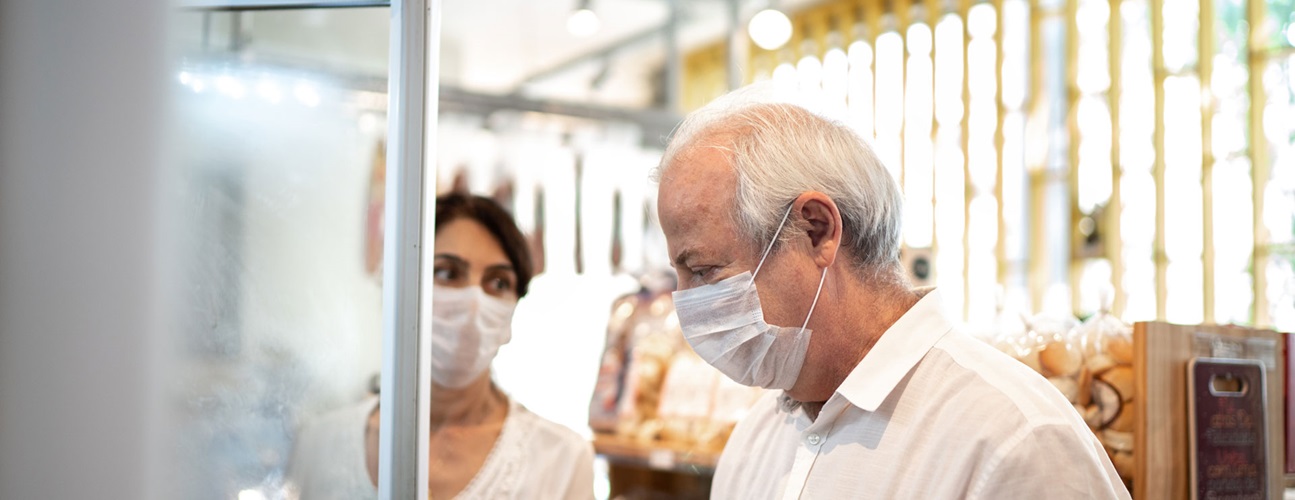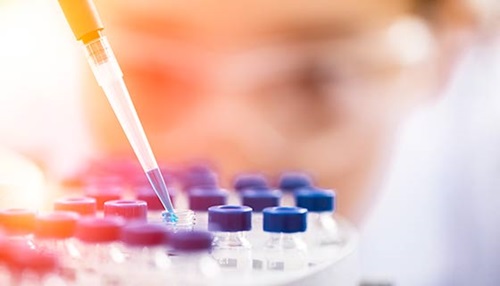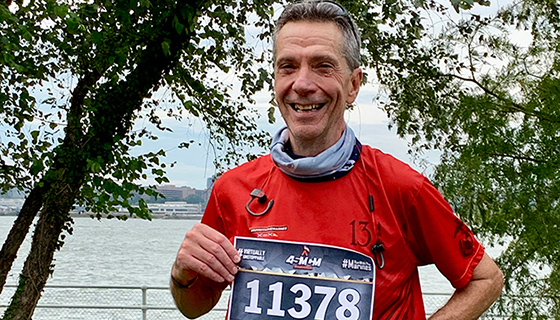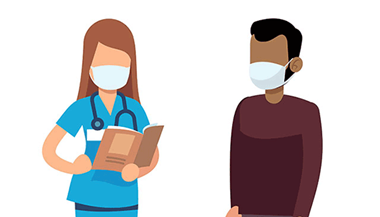Face Masks FAQs
Reviewed By:
Face masks provide protection against transmission of respiratory viruses. Additional steps to help the spread of respiratory viruses include hand washing, respiratory etiquette, and avoiding others when you are sick.
Lisa Maragakis, M.D., M.P.H., an expert in infection prevention, answers questions about face masks.
What are the different types of masks?
The CDC provides an overview of various types of masks and respirators. In general, the most important things you can do are to choose a mask that fits well, and wear it consistently and properly when it is recommended or in situations that you are required to do so.
Cloth Masks
In non-health care settings, multiple-layer fabric cloth masks are excellent barriers for containing respiratory droplets if they are worn consistently and properly, covering the nose and mouth.
Procedural and Surgical Masks
These are loose-fitting masks designed to cover the mouth and nose. Medical grade surgical or procedural masks provide excellent protection due to their filtration and fluid resistance. A simple “knot and tuck” technique can be used to improve the fit of rectangular surgical or procedural masks.
N95s and Other Respirators
N95 respirators offer a higher level of filtration than cloth, surgical or procedural masks. However, they are not necessary to protect people from viruses under normal circumstances. In order to be optimally effective, respirators must be fit-tested and worn properly, tightly fitted against the person’s face.
N95 respirators, Dräger respirators and powered air purifying respirators (PAPRs) are used by medical professionals caring for patients with viral infections such as COVID-19, and when performing high-risk or aerosol-generating procedures.
Face Shields
A face shield is a piece of rigid, transparent plastic attached to a headband. The plastic piece covers the face, extending below the chin.
Dentists and dental hygienists sometimes wear them when working close to patients’ mouths. Doctors, nurses and technologists might use face shields, together with face masks, when performing procedures that could propel blood or other substances into the air.
You should not wear a face shield in place of a mask or wear clear shield-like face masks, which are different than face shields and have gaps around the face and therefore do not provide the same protection as wearing a mask.
Most people do not need a face shield in public settings.
What about neck gaiters, bandanas and masks with exhalation valves?
None of these three types of face coverings works as well as a proper face mask. A good mask has a double layer of washable, breathable fabric that helps keep the wearer from spreading potentially infected droplets into the air. A bandanna tied around the face does not work as well as a mask because it is open at the bottom. A gaiter (a tube of thin, stretchy knit fabric that can be worn around the neck and pulled up to cover the nose and mouth) is usually too thin to provide adequate protection. Likewise, masks with exhalation valves can allow droplets to escape into the air.
Johns Hopkins Medicine does not permit bandanas, gaiters or masks with exhalation valves to be worn by patients, staff members or visitors at our locations.
How do I properly wear a cloth mask?
Anytime you wear a mask, make sure:
- You clean your hands with soap or hand sanitizer before putting the mask on or taking it off.
- It is worn consistently and appropriately. A mask that is frequently pulled down to breathe or talk, or is worn under the nose, is not effective.
- The mask conforms to your face without gaps — it is important that most of the air you breathe in and out flows through the mask rather than around the mask through gaps at the sides, top or bottom.
- Your cloth mask is made from several layers of tightly woven fabric and fits well over your nose and mouth to be an effective filter.
- The mask has a flexible nose bridge to conform to the face and prevent fogging of eyeglasses.
- It stays in place while talking and moving, so it can be worn without slipping and so it does not require you to touch it frequently.
- The mask is comfortable enough to wear without adjusting it for the time you need to keep it on.
Learn more about how to properly wear a face mask.
How do I wash my cloth face mask?
- Masks made of fabric, such as cotton, can be washed in your regular laundry using hot water.
- Disposable, blue surgical masks cannot be laundered or cleaned and should be thrown away when they are visibly soiled or damaged.
- After laundering your fabric masks, tumble dry them in the dryer on a high setting.
- You might consider using a nonscented laundry detergent if you are sensitive to perfumes, so it is easier to wear masks.
- You can also hand-wash your mask, using hot, soapy water. Scrub the mask for at least 20 seconds and dry it on high heat in the dryer.
- Store clean masks in a clean place when you are not using them.
How often should I clean my face mask or covering?
You should clean your mask after every wearing. This reduces the risk of spreading the coronavirus or other germs.
How many face masks do I need?
It’s a good idea to have at least two. This way, you will have a fresh mask if one is in the wash.
Face Masks and COVID-19
Do I need to wear a face mask if I currently have COVID-19?
Yes. If you are actively infected with the coronavirus and cannot stay completely away from others in your home, droplets from your nose or mouth could infect another person. Stay away from others as much as possible and wear your mask around others until your doctor says it’s safe to discontinue wearing it.
Do I need to wear a mask if I am fully vaccinated and have received a booster?
Although being fully vaccinated and/or boosted reduces your chance of catching or spreading the coronavirus, it does not eliminate it entirely. If you are infected with the coronavirus and do not know it, a mask keeps your respiratory droplets and particles from infecting others. Check the mask recommendations in your area to help decide whether you need to mask.
Do I need to wear a mask if I am around someone who is at greater risk for getting COVID-19?
It is important to protect other people from getting COVID-19. Even if you are fully vaccinated and have a booster, wearing a mask provides an extra layer of protection, especially when you are around a person who may be at greater risk of COVID-19. Likewise, people who are at greater risk should strongly consider wearing a mask to help protect themselves.






